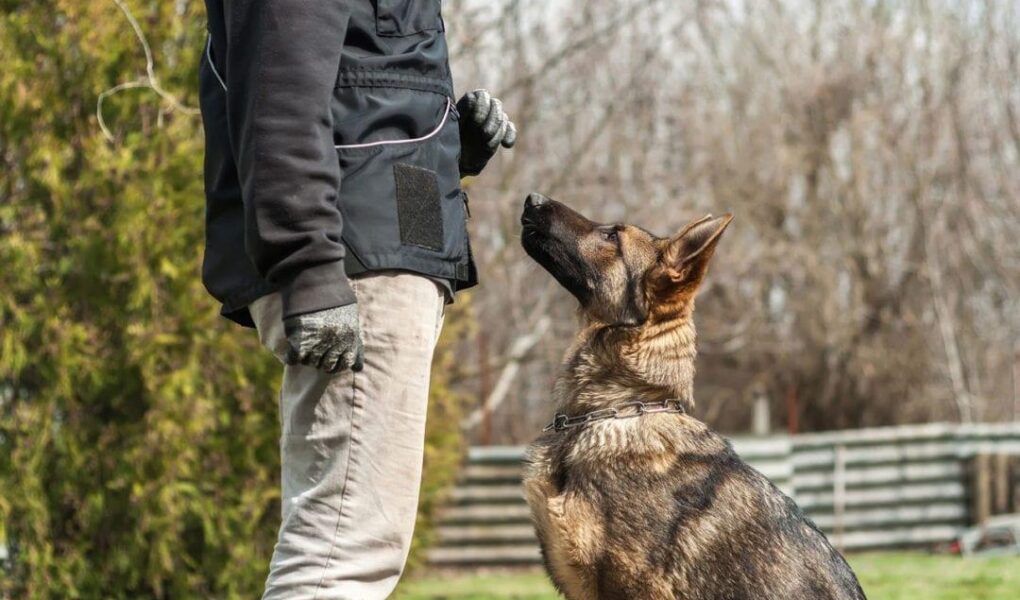Teaching a Dog to Heel: A Journey of Connection and Control
Imagine strolling through a sun-dappled park, the gentle rustle of leaves accompanying your rhythmic footsteps, while your dog walks effortlessly by your side, embodying the perfect blend of companionship and discipline. Teaching a dog to heel is more than just imparting a command; it’s about creating a harmonious bond that enhances your relationship and enriches your shared experiences. In this article, we will explore the essential techniques and tips that can turn this seemingly simple task into a rewarding journey for both you and your furry friend. From understanding the psychology behind leash training to practical steps that foster respect and enthusiasm, let’s delve into the art of teaching your dog to heel and discover how a shared stride can pave the way for countless adventures together.
Table of Contents
- Understanding the Basics of the Heel Command
- Choosing the Right Tools for Successful Training
- Step-by-Step Techniques for Teaching Heel
- Common Challenges and How to Overcome Them
- Q&A
- Future Outlook
Understanding the Basics of the Heel Command
Teaching your dog to respond to the heel command is fundamental for fostering good behavior and enhancing your walking experience together. This command instructs your dog to walk closely beside you, ensuring a structured and focused stroll. Understanding the nuances of the heel command not only improves your dog’s manners but also fortifies the bond between you and your furry friend. Here are some key aspects to consider:
- Positioning: Your dog should be at your side, typically on your left, with their shoulder aligned with your leg.
- Leash Management: Use a short leash to maintain control and avoid distractions, allowing for a gentle yet firm guidance.
- Consistency: Regular practice with the command reinforces the behavior, making it a natural part of your walks.
- Positive Reinforcement: Reward your dog with treats or praise for staying in position, which will motivate them to continue responding positively to the heel command.
Utilizing effective training techniques can significantly enhance your success with this command. Consider implementing a training schedule that allows for incremental progress. A straightforward table can help you plan your sessions:
| Training Session | Duration | Focus Area |
|---|---|---|
| Introduction to Heel | 10 minutes | Basic positioning, rewards |
| Reinforcement | 15 minutes | Consistent feedback |
| Distraction Exposure | 20 minutes | Real-world scenarios |
By focusing on these elements, you can create a solid foundation for your dog to master the heel command and enjoy a more harmonious walking experience.
Choosing the Right Tools for Successful Training
When embarking on the journey of teaching your dog to heel, selecting the right training tools can significantly enhance the experience for both you and your furry companion. The appropriate equipment not only promotes effective learning but also ensures the safety and comfort of your dog. Consider incorporating the following essential items into your training toolkit:
- Leash: A sturdy, adjustable leash allows for better control and encourages your dog to stay by your side.
- Collar or Harness: Depending on your dog’s size and behavior, choose a comfortable collar or a no-pull harness to assist during training sessions.
- Treats: High-value treats serve as excellent rewards for positive reinforcement, keeping your dog motivated.
- Clicker: A clicker can help mark desired behaviors, making it clear to your dog what they did right.
In addition to the basic tools, integrating technology can also yield impressive results. Modern training devices have revolutionized dog training, offering a variety of features to aid in effective communication between you and your pet. Below is a table highlighting a few innovative options that may suit your training needs:
| Device | Function | Benefits |
|---|---|---|
| Remote Training Collar | Provides a gentle static stimulation to correct behavior | Helps establish a long-range connection and control |
| Automatic Treat Dispenser | Rewards your dog for successful commands | Increases engagement and positive association with training |
| Smart Training Apps | Offers structured training plans and progress tracking | Ensures consistency and adapts to your dog’s learning pace |
Step-by-Step Techniques for Teaching Heel
To effectively teach your dog to heel, start by choosing the right environment. Select a quiet space free from distractions where your dog feels comfortable. Begin with your dog on your left side, using a leash that allows for some freedom of movement without being too loose. Use treats or your dog’s favorite toy to attract their attention and encourage them to stay close to your leg. Remember to maintain a calm and steady pace as you walk forward, rewarding your pooch when they remain at your side. This approach helps reinforce the idea that staying close brings good things.
The next stage involves introducing commands and corrections. As your dog learns to stay beside you, start using the command “heel” consistently. If your dog begins to pull ahead or stray, gently tug the leash and return them to the desired position. Be patient, and respond promptly to cues from your dog to keep them engaged. Practicing in short sessions, around 5 to 10 minutes, is ideal for retaining attention. After several practice runs, consider gradually increasing the difficulty by adding distractions or navigating different terrains.
Common Challenges and How to Overcome Them
When teaching a dog to heel, various challenges can arise that may hinder the training process. One of the most common issues is lack of focus. Dogs can easily get distracted by their surroundings, which makes it difficult for them to concentrate on their handler’s commands. To combat this, it is helpful to practice in a quiet area before gradually introducing more distractions. Additionally, using high-value treats as positive reinforcement can keep your dog engaged and motivated. Create a short list of effective strategies to enhance focus:
- Short Training Sessions: Keep sessions concise to maintain your dog’s attention.
- Frequent Breaks: Allow your dog time to relax and absorb the training.
- Vary Your Environment: Occasionally change locations to help your dog adapt to different situations.
Another common challenge is pulling on the leash. This can be frustrating for both the dog and the handler and often leads to a reinforcement of unwanted behavior. To address this, it is essential to teach your dog that pulling results in a stop in progress. Incorporate the “stop and go” technique, where you stop walking whenever your dog pulls ahead, and resume walking only when the dog is back by your side. Here’s a simple table to track progress:
| Date | Duration (minutes) | Leash Pulls | Comments |
|---|---|---|---|
| 01/01/2023 | 15 | 5 | Improved focus near the end. |
| 01/02/2023 | 20 | 3 | Had a breakthrough with distractions. |
| 01/03/2023 | 25 | 2 | Consistent heel positioning achieved. |
Q&A
Q&A: Teaching Your Dog to Heel
Q: What does it mean for a dog to “heel”?
A: “Heeling” is a command that instructs your dog to walk closely beside you, usually on your left side. It encourages good manners on walks and ensures that your pup remains safe and in control, free from distractions.
Q: Why is heeling an important skill for dogs?
A: Heeling fosters a stronger bond between you and your dog and promotes better behavior in public spaces. It keeps your dog from pulling on the leash and helps avoid encounters with other dogs or people, making walks more enjoyable for both of you.
Q: When is the best age to start teaching my dog to heel?
A: You can begin teaching your dog to heel as soon as they are comfortable with basic commands, usually around six months old. However, puppies can learn the concept as early as 8 to 10 weeks with patience and consistency.
Q: What are the essential steps to teach my dog to heel?
A: Start by selecting a quiet area free from distractions. Begin with your dog sitting at your side and hold a treat in your left hand. Encourage them to stay close as you take a few steps and reward them when they do. Gradually increase the distance and duration, using positive reinforcement throughout.
Q: How can I motivate my dog to learn heeling?
A: Incorporate treats, toys, and praise as rewards for good behavior. Keeping training sessions short and fun will help maintain their interest. You can also pantomime excitement, using an enthusiastic tone to build a positive atmosphere.
Q: What should I do if my dog keeps pulling away during training?
A: If your dog starts to pull, stop walking immediately. Wait for them to return to your side before proceeding. This teaches them that pulling leads to a halt, while heeling results in movement, reinforcing the desired behavior.
Q: How long should I practice heeling each day?
A: Aim for short, but frequent training sessions. Practice for about 5 to 10 minutes a couple of times a day. Consistency is crucial, as dogs learn best with structured, repeated exposure to commands.
Q: Can I train an older dog to heel?
A: Absolutely! While it may take more time and patience, older dogs can learn new behaviors. Just adjust your approach, using gentle guidance and ensuring that your training methods align with their energy levels and physical abilities.
Q: What are some common mistakes owners make when teaching heeling?
A: Common pitfalls include using harsh corrections, not rewarding progress, and failing to be consistent. Patience is key; every small victory should be celebrated to keep your dog motivated and eager to learn.
Q: How do I know if my dog has mastered the heel command?
A: Your dog has mastered heeling when they consistently walk by your side without pulling or wandering off, remaining attentive to your movements. You should also see increased focus and responsiveness to your cues, even amidst distractions.
Q: How can I maintain my dog’s heeling skills over time?
A: Continual practice is essential. Incorporate heeling into your daily walks, varying the environment to keep it fresh. Keep sessions engaging and reward your dog regularly to reinforce the behavior and ensure it becomes second nature.
By taking the time to teach your dog to heel, you not only enhance their obedience but also enrich your quality time together, turning every walk into a pleasant adventure.
Future Outlook
As you embark on this rewarding journey of teaching your dog to heel, remember that patience and consistency are your best allies. The bond you forge through training not only enhances your dog’s obedience but also deepens the relationship you share. Celebrate the small victories along the way, and don’t hesitate to adapt your techniques to find what works best for you and your furry friend. With time and dedication, your dog will not only master the heel command but also gain a sense of confidence and security in your partnership. So grab that leash, step outside, and embrace the adventure that awaits you both—one step at a time.


